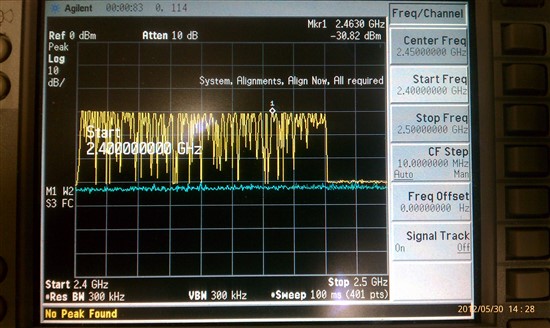We are using the CC256x for regular Bluetooth and are looking for the settings to obtain RF regulatory compliance in Japan. We think that the command 6.1.56 HCI_VS_Set_PLL_Mode (0xFD23) in SWRU193D - Bluetooth Vendor Specific HCI Commands.pdf may do this but it's not clear what the settings should be or if anything else needs to be configured. Can you please tell us what should be done to reduce the number of hop frequencies so the CC256x can be used in Japan ? <<
a) We are using the CC2564
b) The patch load is WL127xL_BT_Service_Pack_1.9_BLE_AddOn.txt
c) Stonestreet Stack


